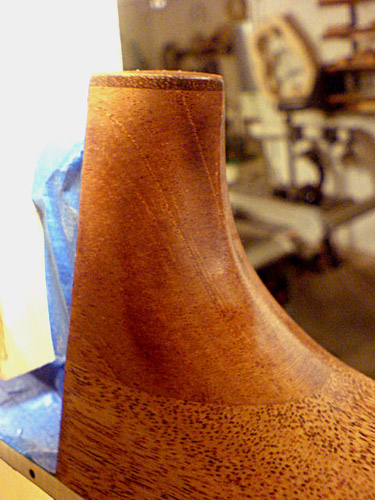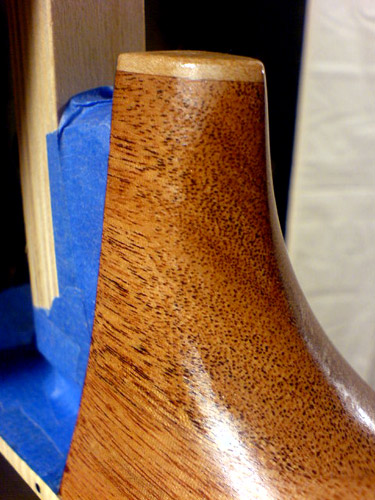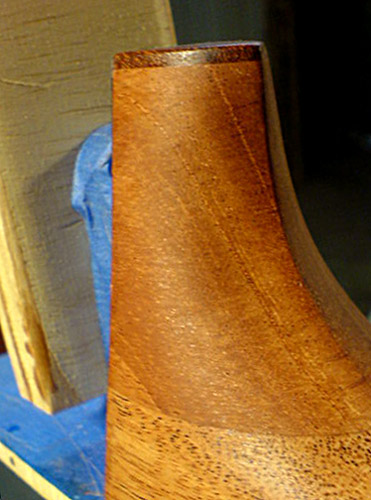Hello all --
I've completed two coats of straight pore filler plus one coat of 50/50 epoxy/da, and am generally pleased with my progress, except... I've got some dark spots on the end grain of one heel, as pictured below:

I was pretty darn meticulous with my sanding and prep, and the other heel looks quite good:

Any suggestions as to how to deal with this? I don't really know how I could sand it any more thoroughly than I already have. Is it possible that these dark areas are inherent in the wood grain? If this is the case, might I just have to live with it? Thanks for any input.
Ken



